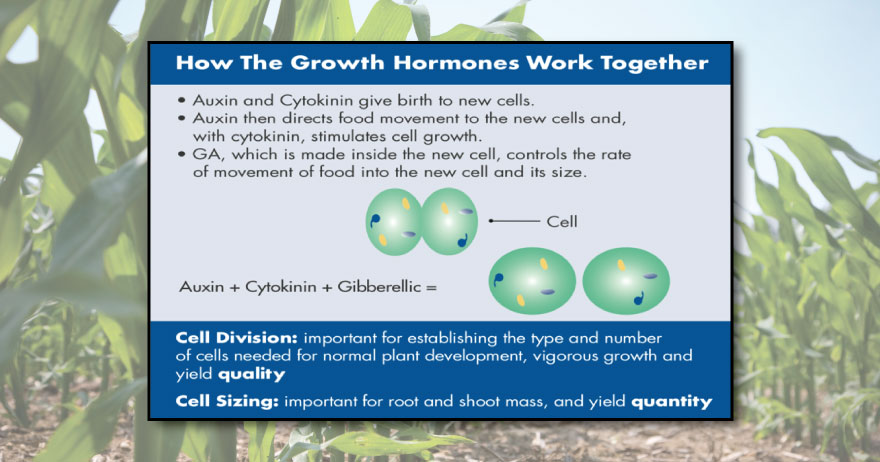Introduction to Plant Hormones: Gibberellic Acid – The Sizer
The past 2 weeks we feature the two other macro-growth hormones, Auxin and Cytokinin. This week we feature Gibberellic acid, the sizer. The interaction of these 3 hormones are essential to cell development, cell health and reproduction.
Plants produce gibberellic acid to encourage cells to size and elongate:
- GA occurs inside the cell and increases the sink of the cell to attract photosynthate (food, sugar) movement into the cell. Food is needed for energy and cell-building material to produce cell expansion (enlargement).
- Auxin transport initiates the synthesis of gibberellic acid. This tends to size the cells and cause longer internode growth or stem elongation, which is very favorable for plants grown for leaf or shoot mass, but is not favorable for plants grown for fruit, seed and storage tissue parts.
- Gibberellic acid is normally stored in the nodes where it increases cell sizing and the reproductive viability of the buds that occur from the nodes. This is why reproductive buds tend to form at nodes.
- If gibberellic acid moves out of the nodes, the nodes become less productive, the seed or fruit at the nodes fail to set and may abort. In the absence of gibberellic acid, flowers, small fruit, or storage tissue may be aborted. GA also helps to break seed dormancy.
- Gibberellic acid works opposite to ethylene and ABA. GA reduces the process of ripening and tends to keep plant tissue more youthful and vigorous.
Contact your Stoller sales representative for more information.

